Remarkable Achievements in 60 Years: Underpinnings of Rapid Economic Growth
III. The development mode was transformed to continuously optimize energy structure
(I) Robust Development of Clean Energy
After the new China was founded, energy consumption in the country has experienced quantitative expansion in energy consumption and optimization of energy structure uninterruptedly. The total energy consumption reached 2.85 billion tons of coal equivalent in 2008, compared with 47 million tons in 1952 and 571 million tons in 1978. The annual growth rate of energy consumption was 7.6% in 1952-2008.
The structure of energy consumption is shifting to a "cleaner" one. Coal as a percentage of energy consumption dropped from 95.0% in 1952 to 68.7% in 2008, resulting in much higher proportion of clean energy.
The installed hydropower capacity increased by 20.1 million kW to 172 million kW in 2008, almost 10 times that of 1978 and 477 that of 1949, the largest one in the world.
 |
|
Large Hydropower Plant |
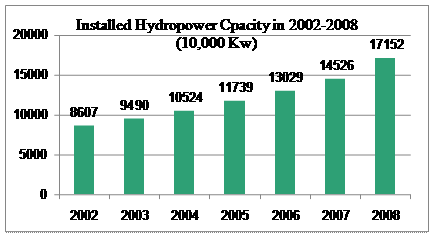 |
|
The installed wind power capacity has doubled for the third consecutive year, reaching 12.17 million kW in 2008, ranked fourth in the world. |
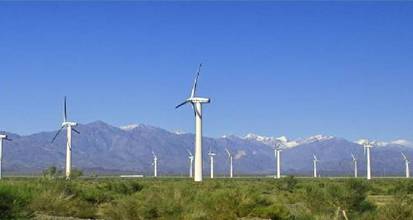 |
|
Large Wind Farm |
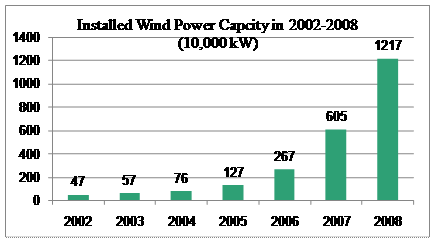 |
The nuclear power started from scratch. Qinshan, Dayawan and Tianwan nuclear power bases were completed successively. The current nuclear power capacity is 9.1 million kW. 2008 witnessed China's heaviest investment in nuclear power, including four nuclear power projects consisting of fourteen 1 million KW units approved and 22.9 million kW under construction. In April 2009, construction of the first AP1000 Generation III nuclear power unit in the world was commenced Sanmen, Zhejiang Province.
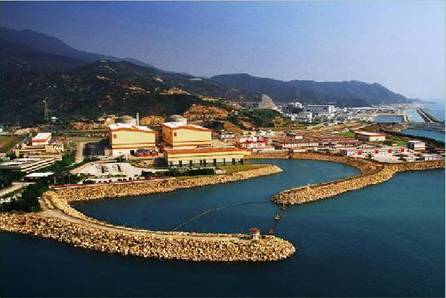 |
|
Dayawan Nuclear Power Plant |
In 2008, the output of solar photovoltaic batteries reached 2 million kW, accounting for the largest percentage of 30% in the world; over 125 million m2 solar water heaters were used, accounting for over 60% of the world total and also ranked first globally.
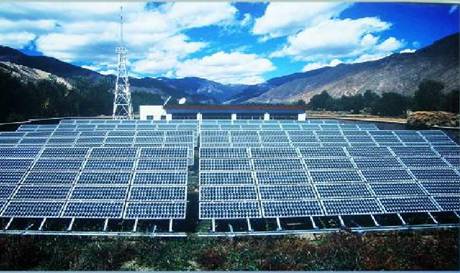 |
|
Solar Power Plant |
Marked progresses are also made in development and use of biomass energy. By the end of 2008, the installed capacity of biomass energy was 3.15 million kW, including over 1,600 large biogas digesters and over 30 million household biogas digesters; the annual biogas output stood at 14 billion m3 and the annual output of liquid biofuel was 1.65 million tons.
 0
0 






